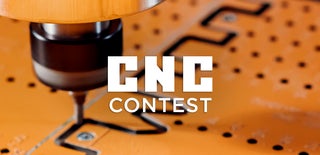Introduction: Small Desktop Column CNC
Because of its characteristics and advantages, laser processing technology has a great influence on the development of manufacturing industry, and it has greater advantages than traditional mechanical processing, such as: smooth cutting surface, small cutting seams, speed and speed., Precision and precision. The small desktop column CNC not only inherits the advantages of large laser cutting machines, but also has the characteristics of small size, high accuracy, light weight, low energy consumption, and high sensitivity, which can greatly save the energy and space required for processing. And can process small parts that can not be processed by large machines. Secondly, the machine uses the design scheme of a vertical column CNC milling machine. The Y axis bed body is fixed on the base, and the X axis bed body is connected to the guide rail slider of the Y axis, and the screw nut mechanism is driven by the Y axis servo motor. Drive X to skateboard and work table to achieve Y-direction movement; By driving the screw nut mechanism through the X-axis servo motor, the worktable's movement in the X direction is realized, and the X and Y axis interpolation functions are realized. The movement in the Z direction is realized by the Z-directed servo motor driving the screw nut mechanism fixed on the column. Secondly, it uses the Windows CNC software mach3 developed by ArtSoft as a control system, which has the characteristics of low requirements for the operating environment, simple operation, and convenient maintenance. It has general PC machine drive communication, as well as manual control modules, directly supporting a variety of DXF, BMP, JPG, HPGL file format input, visual G code display, direct generation of G code, spindle speed control, multiple relay control, Hand shake pulse generation, including a large number of processing strategies, video display, can be used touch screen, full screen display, digitalization. Three-dimensional dynamic display tracking, automatic knife, program jump section execution(Breakpoint memory), up to 6 axis connected CNC control, can meet my small desktop column CNC control requirements. Moreover, mach3 has a strong ability to expand in addition to the functions required by general CNC devices. According to the user's need for external point control, it can enrich the function of the machine tool. In addition, mach3 also supports user interface customization, and users can customize the required features. The switch used to control the laser head to engrave non-planar objects. With this machine, we can certainly meet the market's demand for small CNC.
(Figure 1: Small desktop column CNC)
Step 1: Step 1: Construct Floor and Stable Bearings
The bottom plate and the stable bearing are important components of the appearance of the X axis, the Y axis, and the Z axis. They mainly play a role of supporting stability. Through a bottom plate and two stable bearings, the general appearance of the machine tool is produced. The three holes in the stable bearing are respectively drilled for the penetration of two optical axes and one silk rod.
(Figure 1: Floor Figure 2: Stable bearings)
Step 2: Step 2: Construct Slider, Optical Shaft, Coupling + Wire Rod, Motor
Slider, optical axis, coupling + wire rod, and motor are important parts of the construction of the X-axis, Y-axis, and Z-axis motion. The coupling is driven by the motor to rotate the wire rod, thus driving the sliding block on the optical axis. Movement, so this step is the most important step in all steps.
(Figure 1: slider Figure 2: optical axis Figure 3: coupling +Screw rod Figure 4: Motor)
Step 3: Step 3: Build X 、 Y Axes and Z Axes
Because our small table stand CNC is a three-axis CNC machine tool, we need to establish x-axis, Y-axis and z-axis to meet our motion requirements. The three shafts have the same structural type, which are composed of base plate, stable bearing, sliding block, optical shaft, coupling, screw rod and motor, but the difference is that z-axis, x-axis and y-axis will be longer, so as to meet the requirements of motion range. Secondly, a stable bearing will be added at the lower end of the Z axis to prevent the laser from colliding with the working plane. And the material used for the whole fuselage is not much, thus reducing the cost of production and installation.
(Figure 1: x-axis and y-axis Figure 2: Z axis)
Step 4: Step 4: Build Work Platform, Laser and Support Plate
The working platform, laser and support plate are drawn by drawing, and grooves are drawn on the working platform to improve the roughness and increase the heat dissipation area. The laser is small, which conforms to the main idea of the machine. The stability of the machine is improved by using two support plates to prevent the shaking and deviation of the machine.
(Figure 1: working Figure 2: laser Figure 3: support plate)
Step 5: Step 5: Assemble and Render
Each mechanism is connected by the connection function, and the slider is used to connect the slider and the screw rod, so that the movement can be carried out in all directions. Finally, each part of the small desktop stand column CNC is rendered, so that the appearance of the small desktop stand column CNC is more realistic.
(Figure 1: after assembly and rendering)

Participated in the
CNC Contest









